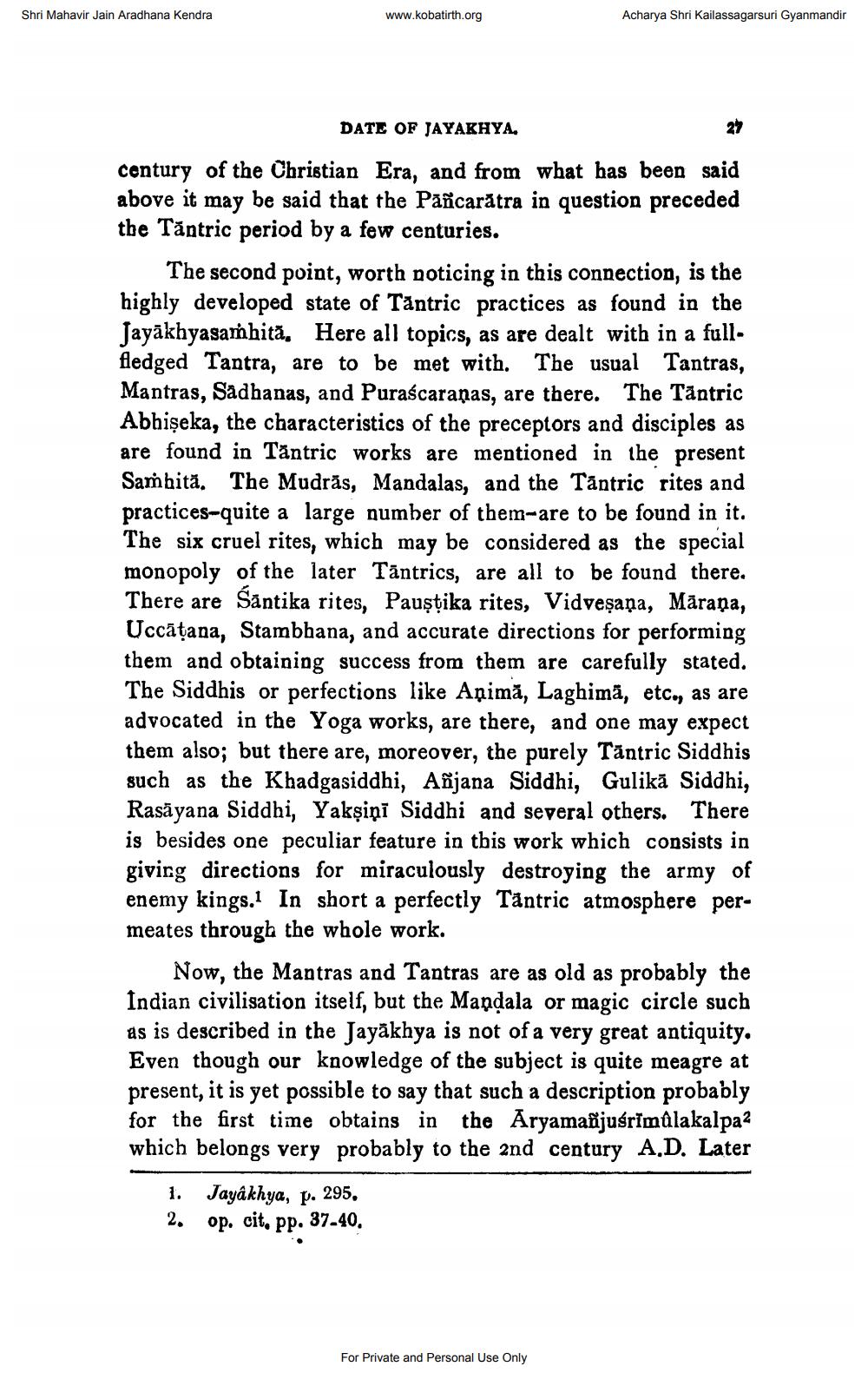________________
Shri Mahavir Jain Aradhana Kendra
www.kobatirth.org
DATE OF JAYAKHYA.
century of the Christian Era, and from what has been said above it may be said that the Pañcaratra in question preceded the Tantric period by a few centuries.
Acharya Shri Kailassagarsuri Gyanmandir
1. Jayâkhya, p. 295.
2.
op. cit, PP. 37-40,
The second point, worth noticing in this connection, is the highly developed state of Tantric practices as found in the Jayakhyasamhita. Here all topics, as are dealt with in a fullfledged Tantra, are to be met with. The usual Tantras, Mantras, Sadhanas, and Puraścaraņas, are there. The Tantric Abhiseka, the characteristics of the preceptors and disciples as are found in Tantric works are mentioned in the present Samhita. The Mudras, Mandalas, and the Tantric rites and practices-quite a large number of them-are to be found in it. The six cruel rites, which may be considered as the special monopoly of the later Tantrics, are all to be found there. There are Santika rites, Pauṣṭika rites, Vidveṣapa, Māraṇa, Uccatana, Stambhana, and accurate directions for performing them and obtaining success from them are carefully stated. The Siddhis or perfections like Aņimă, Laghimā, etc., as are advocated in the Yoga works, are there, and one may expect them also; but there are, moreover, the purely Tantric Siddhis such as the Khadgasiddhi, Añjana Siddhi, Gulikā Siddhi, Rasayana Siddhi, Yakṣiņi Siddhi and several others. There is besides one peculiar feature in this work which consists in giving directions for miraculously destroying the army of enemy kings. In short a perfectly Tantric atmosphere permeates through the whole work.
27
Now, the Mantras and Tantras are as old as probably the Indian civilisation itself, but the Mandala or magic circle such as is described in the Jayakhya is not of a very great antiquity. Even though our knowledge of the subject is quite meagre at present, it is yet possible to say that such a description probably for the first time obtains in the Aryamanjuśrïmulakalpa2 which belongs very probably to the 2nd century A.D. Later
For Private and Personal Use Only




